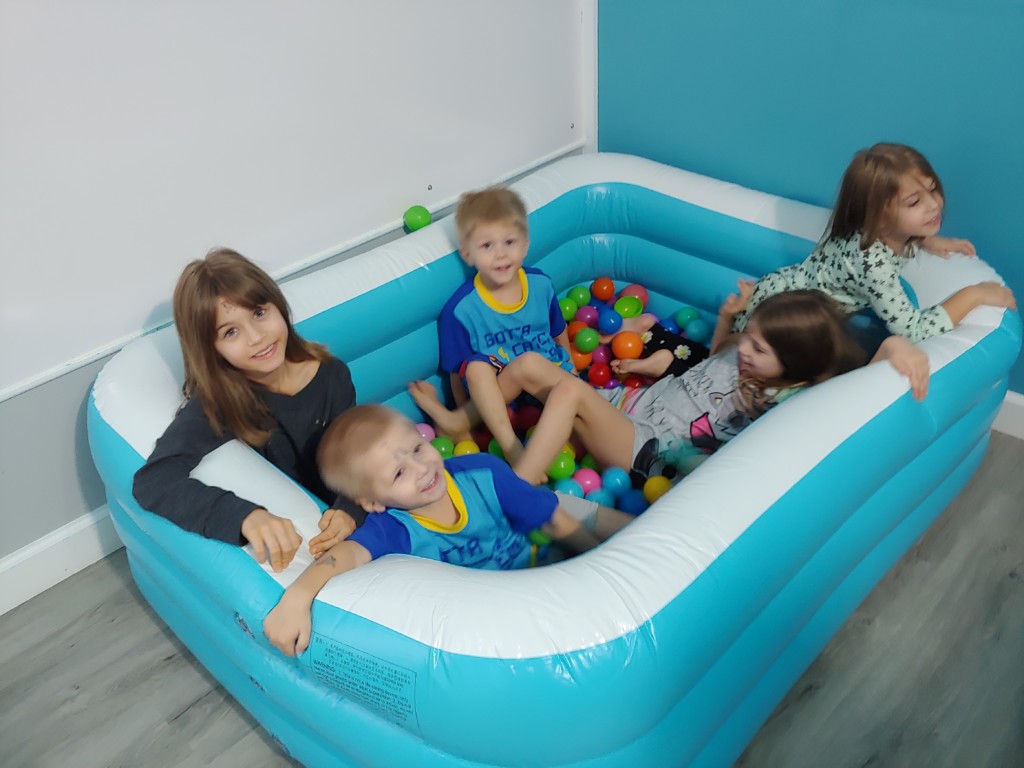
Chrissy Weisenberger is one busy mom.
With five children, including 3-year-old twin boys and two daughters who are both on the autism spectrum, homeschooling the whole brood made the most sense for the family. It allows her to design each child’s learning plan to best fit his or her educational needs.
“It’s very Frankensteined,” joked Weisenberger, who lives in Palm Bay, Florida, a city southeast of Orlando known for its sports and nature parks.
By that, she means like many homeschool parents, she has strategically used a little of this and a little of that, a grassroots method of creating the perfect learning environment for her family.
Her two daughters, Keira, 8, and Tessa, 6, are on the autism spectrum and participate in the Gardiner Scholarship Program for students with unique abilities. The scholarships allow parents to customize their child’s education by using flexible spending accounts called education savings accounts.
While traditional vouchers pay for private school tuition, the savings accounts are more flexible. The Florida Department of Education transfers a portion of a child’s funds from the state education formula to a state-approved nonprofit organization, such as Step Up For Students, which puts these funds into an account for each child. Parents then apply to this nonprofit for permission to use their child’s ESA funds to buy state-authorized educational services and products.
The girls need help to stay focused on learning, so in addition to purchasing educational materials such as books and workbooks, Weisenberger has used her daughters’ education savings accounts to buy specialized equipment such as swings, which calm kids with autism, and a mini trampoline that helps with balance and gross motor skills.
She bought two chewable necklaces for Keira, who otherwise would chew on her hair during class. She bought the girls laptops to access virtual lessons in math and reading, which she says were a godsend during the pandemic when co-op meetings with other homeschool families were canceled. And she bought them a kit that taught them how to build a volcano.
Most Gardiner families typically make purchases through MyScholarShop, Step Up For Students’ online catalog of pre-approved educational products. The platform includes curriculum materials, digital devices, and education software. Families may be able to purchase items or services not on the pre-approved list by submitting a pre-authorization request that includes supporting documentation and an explanation of how the purchase will meet the individual educational needs of the student.
An internal committee, which includes a special needs educator, conducts a review to determine if the item or service is allowable under the program’s expenditure categories and spending caps, and a notification is sent to the parent. The item or service may then be submitted on a reimbursement request that must match the corresponding pre-authorization.
Step Up For Students employs numerous measures to protect against fraud and theft. For example, if a service provider’s reimbursement request is submitted from an IP address and the platform sees that the parental approval came from the same IP address, the anti-fraud staff is alerted to investigate.
Weisenberger followed this process to purchase one item not on the pre-approved list: a $25 inflatable kiddie pool.
While a swimming pool would not qualify as a reimbursable expense under the program’s rules, Weisenberger’s proposed use made it eligible. Inspired by a Pinterest post, she converted the rectangular pool, which she ordered from Amazon, into a ball pit that she filled with almost 3,000 plastic balls. Her girls use the reconfigured pool to help them with balance.
But Weisenberger’s creativity extends further. She’s devised a way to use the pool to help her kids with math.
Using three buckets, she teaches place value by having them put the appropriate number of balls in each. For example, the number 436 would be represented by putting four balls in the hundreds place bucket, three balls in the tens place and six balls in the one place buckets.
The inventive mom has found yet another way to utilize the purchase. She pours the balls over Keira as a way to soothe her sensory-challenged daughter.
Weisenberger, who learned about Gardiner from a speech therapist two years ago, said she is very pleased with the program. While she suspects two of her other children may qualify for a scholarship, the funding she presently receives satisfies the family’s learning needs.
“I don’t want to take it away from somebody else who needs it,” she said.


